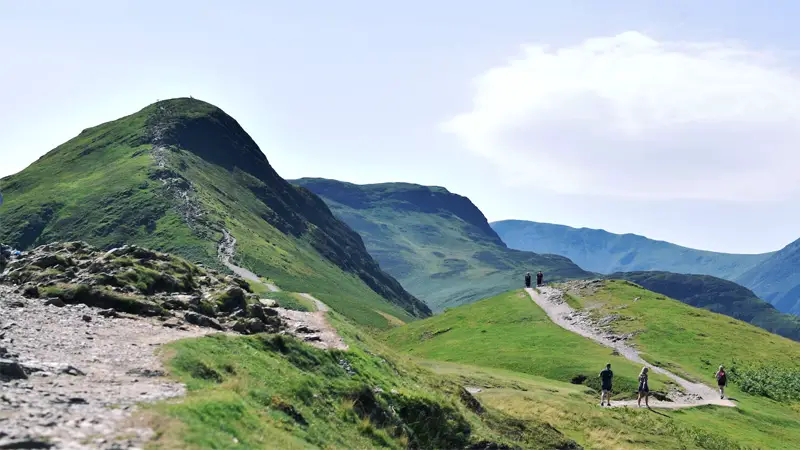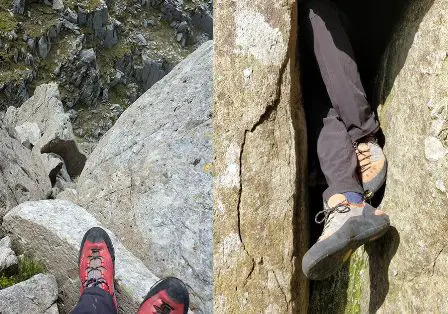If you have never visited Wales before, you’re in for a treat. It is arguably…

England’s Lake District: diverse terrain, rugged mountains, and spectacular views all help to make it the premier destination for a scrambling adventure. There are so many scrambling routes ready and waiting for you – but how do you get to them?
Travelling to the Lake District
The nearest major city is Manchester, and Manchester Airport is the airport to be at in the north of England as it has a wide range of international and domestic flights. What about accommodation? There’s lots, but there’s also lots of demand! To make the choice easier, you could try combining your flights and accommodation – it should save both money and time. Make use of new technology to do this: you could find flights and hotels on the Opodo app, as it quickly scans and compares the options to present you with a range of options.
Once you’re in Manchester, you’ll need to travel for around another two hours to get to the heart of the Lake District. This trip is also nice and easy – trains run regularly from Manchester to Windermere in the South Lakes or Penrith in the North Lakes. Once you’re there, you’ve got trains, buses, car hire, minibus tours, and even passenger boats to take you exploring.
Lake District Scrambling Routes
Each of the many scrambling routes in the Lake District offers its own unique challenges, as well as stunning views once you make it to the top.
Let’s first talk about Jack’s Rake. This classic, grade-1 scramble takes you across Pavey Ark. It’s one of the most popular routes in the UK, but certainly not for the faint-hearted! Still, those brave enough can expect views over Stickle Tarn and Langdale Valley at the top.
Next on our list is Striding Edge. The most famous scramble in the Lake District rises and twists above the Red Tarn and takes you to the summit of England’s third-highest mountain — Helvellyn. Some parts are so narrow that you can literally sit down with one leg on either side of the ridge – so caution is advised.
Sharp Edge is another classic Lakes scramble, located near the Blencathra mountain range. Just like Jack’s Rake, Sharp Edge has a grade 1 rating and promises views over the town of Keswick.
Experienced scramblers might turn to Pillar Rock. It’s one of the most challenging scrambles in the Lake District, rated as grade 3. It’s quite remote, involves a steep climb up a narrow gully, and some sections are exposed- it’s definitely not for beginners.
Fitness Requirements for Scrambling
Scrambling is exhilarating, but it’s also physically demanding. It requires a degree of strength, endurance, and balance. You don’t have to be a world-class athlete to be a scrambler, but you do need to be in good health and maintain a certain level of fitness.
A good way to prepare yourself physically for scrambling is to start with some basic cardiovascular exercises like running or cycling to help you build stamina. Some strength training is also a good idea. Focus on your legs and core stability, as both are crucial when navigating steep terrains. For balance, consider yoga and similar to enhance your agility.
As a simple rule of thumb, ask yourself:
First up, can you walk comfortably for 7-8 kilometres? Can you carry a backpack that weighs 5-6 kilograms while hiking up steep inclines? And how about your overall strength, do you have the upper and core strength needed for climbing?
It’s OK if you don’t feel comfortable in any of these areas. We all have to start somewhere, and both sensible and safe to start slowly and gradually improve your fitness levels over time.
Equipment for a Scrambling Trip
There are some non-negotiables for scramblers. First up is a sturdy pair of footwear because you don’t want your shoes to fall apart. You’ll need excellent grip as you’re likely to encounter slippery surfaces, and don’t forget strong ankle support.
Let’s not forget one of the most important parts of your body – your head. It’s essential to get a sturdy helmet as the first port of call when getting your safety gear. Not only will it protect you in case of a slip or fall, but it’ll also protect you from above if in case rocks or debris fall on you. Make sure you get one that fits well and that you can wear comfortably for long periods of time.
Other safety equipment includes protective gloves for the rocky surfaces, a rope for more advanced courses, and a basic first aid kit to treat any minor injuries. Scrambling can be tiring, so make sure you always take plenty of water to stay hydrated, as well as some snacks to help you refuel.
A scrambling trip is a unique style of holiday, but if you’re up for it, it can be so worth it. The Lake District has all you need for your next adrenalin-filled adventure – so have you started planning yet?


This Post Has 0 Comments